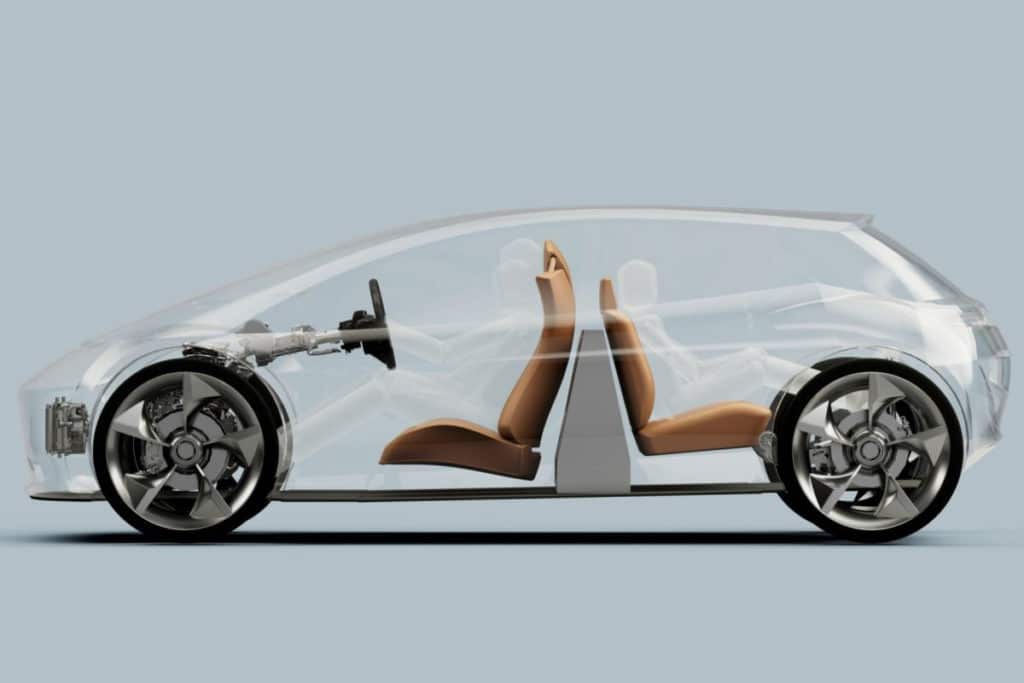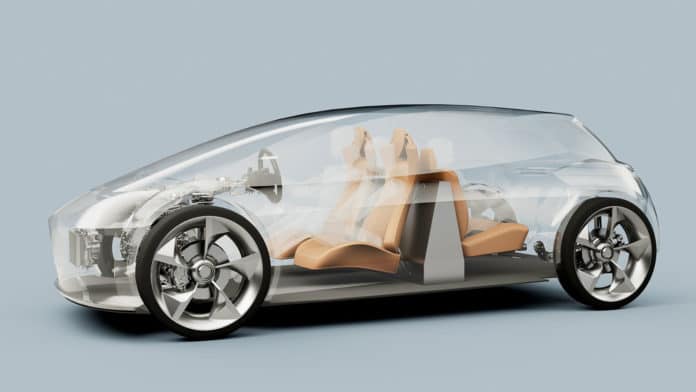A London-based startup, Page-Roberts, has revealed an innovative electric car design solution that, it says, could allow for 30% more range per charge.
The company’s patented design concept is rethinking the placement of the battery pack in a conventional electric passenger car. Instead of placing the battery pack under the vehicle’s floor pan like most EVs currently in production, Page-Roberts calls for the battery to be mounted vertically in the center of the cabin itself, splitting the two rows of seating.
The battery takes up about half the height of the vehicle, and to prevent it from interfering with rear-passenger legroom, Page-Roberts rotates the rear seats around to face backward. The battery pack has been angled for a better fit between the reclining seats.

In contrast to the increased height, longer wheelbase, and structural complexity due to the standard “skateboard” platforms, the UK company believes that the vertically arranged battery pack can significantly improve the design, user experience and also reduce construction costs. The startup said this layout is “much more compact” than the designs currently in use. At the same time, it would allow the car’s ground clearance to be lowered, thereby improving the vehicle’s aerodynamic efficiency and reducing the weight.
The company claims that all of these benefits combined would result in the car being able to cover 30% more distance on a single charge, or it might be enough to install smaller batteries to achieve the same range as at present. As a result, it is estimated that manufacturing costs could be reduced by up to 36%.
The efficient crash structure and reduced exposure of battery to impact lead to 35 to 75 kg weight savings compared with the underfloor battery arrangement, and the lower vehicle height saves a further 8 to 25 kg. A lower-weight vehicle leads to a virtuous circle – a smaller battery, lighter and lower cost motors, body, brakes, and suspension systems. The torsion box arrangement from the battery pack lateral structure increases the structural efficiency – leading to body structure weight saving opportunities.
This design is envisaged as a solution primarily for small electric cars, especially “slim and sporty four-seater vehicles,” which may benefit from a lower-body and shorter wheelbase.
However, the rather radical proposal of Page-Roberts raises some questions as, for example, the reverse orientation of the rear seats is not something convenient for passengers, especially when it comes to long journeys. In addition, there are issues related to increasing the distance of the center of gravity from the ground and those related to safety from having such a mass in the center of the cab. Besides, the central, occupant-splitting battery barricade disrupts the entire look and feel of the interior.
